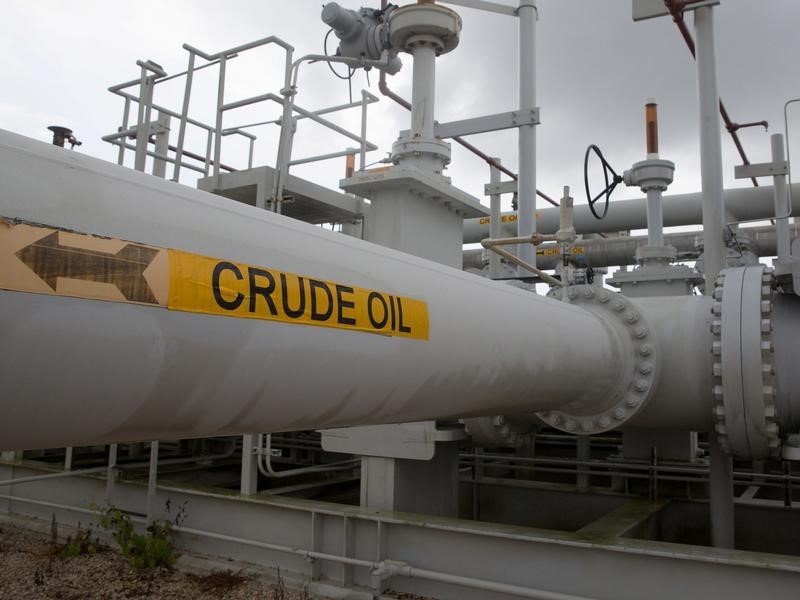By Barani Krishnan
Investing.com -- The Iran nuclear deal is off and the dollar is down. Yet, oil prices had problems holding to Monday’s highs on concerns over what new curveball China could throw at the market over its Covid situation.
A U.S. government report forecasting the highest ever shale oil output in October also deprived the market of some of its price upside.
Crude production in the Permian, the most prolific U.S. shale oil patch, should hit an all-time high in October, the Energy Information Administration said. Output in the Bakken, the second major producing oil field, is expected to reach its highest since November 2020 next month. Eagle Ford, another key shale basin, is anticipated to reach its highest level since April 2020.
New York-traded West Texas Intermediate, which serves as the U.S. crude benchmark, settled up 99 cents, or 1.1%, at $87.78 per barrel, substantially lower than its intraday high of $89.06.
Brent, the London-traded global benchmark for oil, was up $1.16, or 1.3%, at $94 per barrel, versus its session high of $95.14.
WTI hit a seven-month bottom of $81.20 last week while Brent marked a similar milestone low of $87.25 as talk of the Iran deal likely coming through coincided with 20-year highs in the dollar and a spate of coronavirus lockdowns in top oil importer China.
The Dollar Index was down for a fourth straight day on Monday, losing a cumulative 2% from the 2002 highs it notched last week against the euro and five other currencies. A weaker dollar essentially makes it cheaper for a commodities fund in Europe to buy, say WTI, or for that matter any commodities priced in the U.S. currency.
Iran and the United States, meanwhile, looked like they were once again far from an agreement on restoring Tehran’s 2015 nuclear deal, which would be the only way for the Islamic Republic to unlock U.S. sanctions withholding the legitimate return of an estimated one million barrels per day of its oil from the export market.
While the dollar and the unlikelihood of an Iran deal were positives for oil bulls, the China Covid situation remained a dark horse in the race that determined commodity prices.
About 65 million people in 33 cities across China have been placed under partial or full lockdowns, as authorities double down on stamping out coronavirus outbreaks ahead of the Chinese Communist party’s 20th congress in mid-October. The party chief, Xi Jinping, is expected to secure a precedent-breaking third term as China’s leader at the one-in-five-year congress.
Oil demand in China, the world's biggest energy consumer, could contract for the first time in two decades this year as Beijing's zero-Covid policy keeps people at home during upcoming holidays and reduces fuel consumption, Reuters reported. Hundreds of millions of Chinese who typically hit the roads and domestic flights during the Mid-Autumn Festival - falling on Sept. 10 this year - and early October's Golden Week holidays are expected to stay home to avoid being ensnared by sudden lockdowns to curb the coronavirus spread.
“The Chinese Covid situation just refuses to die down and the authorities there keep throwing one new curveball after another at the oil market in terms of lockdowns and other social curbs,” said John Kilduff, founding partner at New York energy hedge fund Again Capital. “Otherwise, things should be bullish for oil, though WTI will likely find hard resistance at $90 per barrel until at least next week’s Fed rate hike.”
With slightly more than a week to the Federal Reserve’s Sept. 21 rate hike, commodity traders are trying to decide how to hedge for this month’s biggest market event — a predicament not helped by the Chinese Covid lockdowns.
The Fed has raised rates by 225 basis points in four increases since March, with two back-to-back 75 basis point hikes in June and July, to curb runaway inflation.
U.S. prices have been growing at around four-decade highs since late last year, although the closely-watched Consumer Price Index, or CPI, slowed to an annualized rate of 8.5% in July from a peak of 9.1% in June. The next CPI reading, for August, is due on Sept. 13.
The Fed’s target for inflation is a mere 2% a year and it has vowed to raise interest rates as much as necessary to achieve that. Economists have cautioned that the Fed could end up pushing the United States into a deep recession with its sharpest rate hikes in four decades, saying the high-flying housing sector and one-time ebullient stock market could be major victims. Preliminary estimates show the U.S. gross domestic product, or GDP, likely contracted by 0.6% in the second quarter after a 1.6% slowdown in the first quarter. Two straight quarters of GDP growth typically places an economy in a recession
Notwithstanding the Chinese Covid situation and rate hikes, some analysts remained optimistic about the near-term outlook for oil.
“Risk appetite is back and that is mainly due to the falling dollar, which [is] adding fuel to the rally in crude,” said Ed Moya, analyst at online trading platform OANDA. “The oil market still remains tight and seems poised for further shortages as growth outlooks globally seem to be improving. European risks could be peaking this winter and China’s cyclical risks are very short-term. Demand destruction calls have been overdone and oil seems like it could be poised to make a run back above the $100 a barrel level.”
